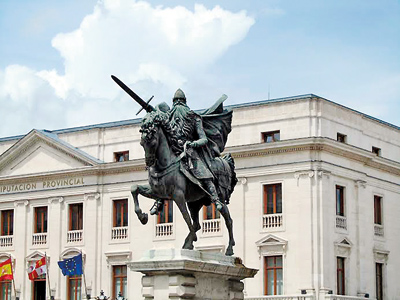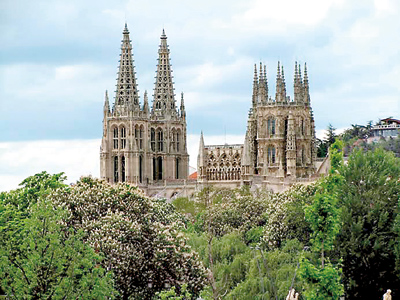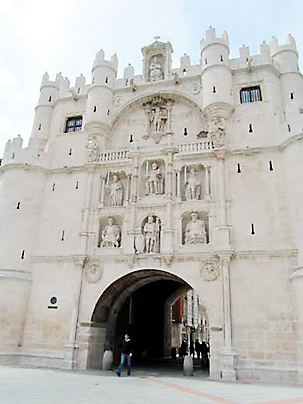Strangers in the city of El Cid
The ancient city of Burgos in northern Spain achieved fame as the birthplace of the legendary 15th century military hero Rodrigo Diaz de Vivar.
Better known as El Cid (The Lord), Rodrigo Diaz was made well known to American movie fans of the last generation following the award winning Hollywood movie El Cid which starred Sophia Loren and Charlton Heston.

Larger than life: The statue of El Cid
Even today, Burgos has a larger than life statue of El Cid on horseback to honour its native son – although it must be admitted that the statue does not look as handsome as Charlton Heston did in the movie!
Burgos has been the historic capital of the ancient Spanish kingdom of Castille, but the city today has much more to recommend it to the visitor than just its 15th century war hero.
The city was first mentioned as far back as 884, and over the ensuing years successive kings of Spain promoted trade and commerce here – so much so that the famous Islamic geographer and cartographer Al Idrisi who visited Burgos in the 12th century wrote that even in those times Burgos was “strong, affluent, has houses of trade and is frequented by many travellers”.
All this trade resulted in wealth for the city which in turn naturally led to architectural extravagance.
The magnificent medieval gateway to the city, the Arco de Santa Maria (Arch of Saint Mary) that dates from the 14th century announces to those entering its walls that this is no ordinary city.
The ancient Catholic cathedral today is one of the largest and most beautiful in all of Spain and has been declared a UNESCO World Heritage site.

Cathedral of Burgos (left) and the Arco de Santa Maria – entrance into Burgos (right)
Its intricate doorway is a masterpiece in stone while its historic chapel of the Condestables of Castille is truly amazing.
Another place well worth seeing is the Monasterio de las Huelgas Reales (Monastery of the Royal Retreats) on the outskirts of the city. Founded by King Alfonso VIII in the 12th century, it has some remarkable cloisters that are truly a beauty to behold.
There is an unusual statue here of St James that has a movable arm carrying a sword that was used to initiate new knights by ‘touching’ their shoulders with the sword!
Quite apart from the medieval religious sights in this city, there are also more modern sites to attract the visitor.
Inspired by the finding in the Atapuerca region close to Burgos of human remains from about 600,000 years ago which constituted the oldest evidence of hominids in Europe, the city’s Museum of Human Evolution was opened in 2010 to display these finds and publicise their story.
It is projected to become one of the most visited museums in the country; it displays not only the findings from these archaeological excavations but also explains, in language that makes science intelligible and interesting for visitors, all about how these findings were made, the significance of these findings to our understanding of human evolution, and much more besides.
During our visit to Burgos we set aside a full morning to see the Museum, following this with a lazy Spanish lunch (Burgos was, after all, voted Spain’s Capital of Gastronomy in 2013!) and an afternoon at the comprehensive Military Museum which allowed us to indulge our love of military history.
The evening was set aside for relaxation and some more healthy Spanish eating – which left us the whole of the next day to savour all that there was to see in the cathedral plus the other medieval sites such as the Carthusian monastery of Miraflores and the Hospital de la Rey which is now part of the University of Burgos.
Modern visitors to Burgos will surely agree with what the 19th century writer, Josephine de Bruickman, wrote: “How little time is one day to see and appreciate this ancient city!”
Traveling to Burgos is easy via plane, high speed train or international bus. However you get to Burgos, spend a couple of days here – it is certainly a marvellous place.


